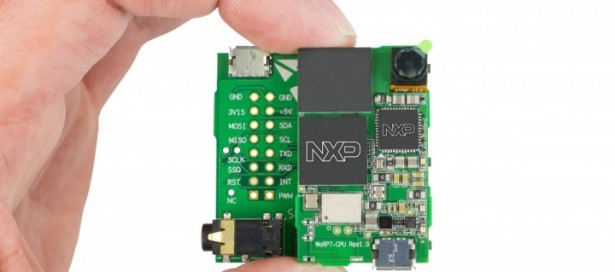Established companies and emerging start-ups are putting a stake in the Internet of Things ground, an opportunity with estimates of 50 billion devices connected by 2020.
Standing in the way for many companies is the increasing complexity of technology inside connected devices. Shortened design cycles further fuel pressure felt by designers — the shelf-life of an IoT device is similar to a smart phone, from 12 to 18 months. If your new or updated product isn’t first out the door, another product will take its place.
Getting an idea hatched into a working prototype isn’t always easy, regardless of design experience. Where do you start, especially if you’re a start-up with limited resources?
It’s not just the chip – it’s about the support
Today, the most important factor in deciding what processor you base a design on isn’t the chip itself. It’s about the ecosystem that supports it.
With the announcement of the i.MX 7 series, we’re announcing an ecosystem of partners to help you bring your designs to market without delay.
(Read about the i.MX 7 series highly integrated multi-market applications processor for secure and portable IoT devices that utilizes both the ARM® Cortex®-A7 and Cortex-M4 cores to enable Heterogeneous Multicore Processing. )
Full speed ahead to your IoT device
NXP offers the general-purpose i.MX 7 SABRE development board and the WaRP7 wearable reference design board accelerates wearable product development. However, the majority of our development ecosystem is delivered through our partners.
We’ve worked with six companies to deliver evaluation boards (which will be on display at our Embedded World booth) aimed at the different target markets of the i.MX 7 series.
Tools & Software Partners
Once you’ve selected an i.MX 7 board, what development and debug tool are you going to use? NXP worked with ARM to enable simultaneous multicore Cortex-A and Cortex-M system debug and trace with ARM DS-5 development and debug tool. This allows developers to fully utilize the HMP architecture without slowing down development.
Utilizing both the Cortex A and M cores might require software expertise, NXP engaged early with several partners to provide support tools and services.
- Adeneo Embedded developed a demo that focuses on the i.MX 7’s power management capabilities (on-view at NXP’s Embedded World booth). Cycling through the different system power states of the shared Linux/FreeRTOS environment, Adeneo shows the full potential of the heterogeneous Cortex-A and Cortex-M core environment. They’re an official NXP partner for Linux, Android, QNX, and Windows Embedded development on i.MX architectures.
If you’re familiar with Linux development on an Cortex-A core, the Cortex-M core offers potential for new low-power modes. It may, however, prove a challenge for those that require more than our Free RTOS. To help you fully explore the potential of both cores, NXP worked with Micrium and Prove & Run for specific usage models.
- Micrium’s µC/OS RTOS delivers kernel and connectivity solutions running on both cores. The µC/OS kernels, TCP/IP, CAN, USB, and File System stacks have all been ported to the i.MX 7. OpenAMP support is also available. Micrium offers industry-leading performance with increased power efficiency while lowering BOM costs due to reduced memory resource usage.
For More Details: Six boards for rapid IoT development


